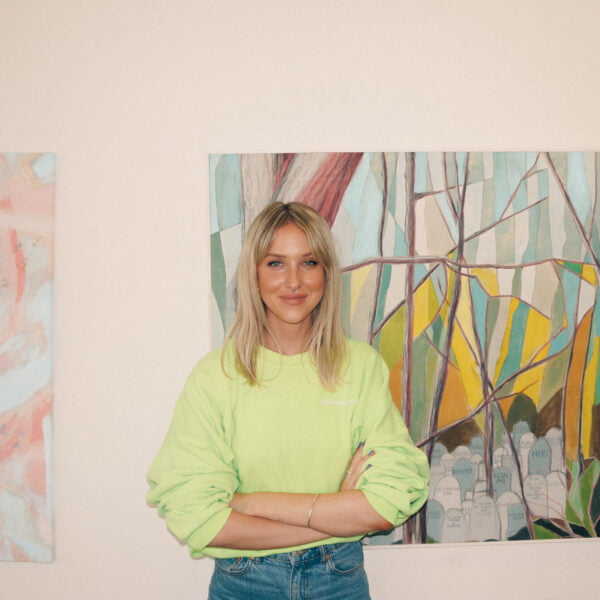
Natasha Collie
Senior Brand Marketing Manager at Penguin Random House UK
At the start of the year, Ladybird Books approached Sonder & Tell with a dream brief. In 2021, a year that’s been particularly challenging for...
In conversation with
Founder of Stories Behind Things

Jemma is the founder and creator of Stories Behind Things, a platform that believes in progress over perfection. Since the beginning, storytelling has been at the DNA of the brand, and their goal is to share practical stories and useful advice to motivate people make small changes in their daily routines and make them feel confident in their capacity to create a positive impact in our world.
With a background in fashion, she knows first-hand the negative impact this industry has on the planet and the society. We spoke to Jemma to understand how general consumption habits got her into sustainability, get her take on what brands need and must to do to become truly sustainable, and learn more about the impact overconsumption has on our mental health.
I love this question. It really makes me think of what got me into sustainability when I was at university studying. My background is in fashion so I loved how designers got their story across through collections, colour and texture. That’s always really interested me.
But really my root into sustainability was through the mental health lens. So my kind of inspiration were people talking online about the impact overconsumption has on mental health. Those are the sort of stories that made me want to start Stories Behind Things in the early days.
One that comes to mind is Intersectional Environmentalist. They started during lockdown, when everyone was at home thinking maybe individual actions don’t make a big difference. It was really inspiring for me to see their growth over the last two years, and how they inspire their audience to make the world a fairer place through business, as well as sharing stories of incredible activists around the world.
Elizabeth Kind and Tansy Hopkins are extremely inspiring as well. And at last, the power of conversation with friends, co-workers, and people within your smaller community of family friends.
I left university feeling very disconnected from the fast-paced consumption world of fashion and just general consumption habits. So I started the Instagram account around the basis of sharing stories and my interest in what we consume on a daily basis.
Storytelling has been absolutely at the DNA of the brand since day one. At Stories Behind Things we believe in progress over perfection. We’re all individuals trying to do better every day and live in line with our values. We want to lead with solution based tips and action points, so that anybody coming to our world leaves feeling they can make a difference.
As we’ve grown, we’ve used that storytelling to apply it to other things within the industry. Now we tell the stories of brands that we think are really doing great things for the planet, or about the benefits of consuming slower and the impact to your mental health.
“For me it is about honest communication and radical transparency. The most successful brands are the ones that recognise they are not perfect but share their journey and let the customer make the decision.”
For me it is about honest communication and radical transparency. The most successful brands are the ones that recognise they are not perfect but share their journey and let the customer make the decision.
GANNI has been refreshing. The way they share statistics on how many items on their new collection are sustainable, and the way they define what they see as sustainable. Allbirds is another great example of the impact really educating people on the material innovation side of things has.
It’s ok for brands to have their own definition but they must share that with their audience.
A lab grown diamond company called Sky Diamond came to us and we were keen to work on a project together. It’s such an interesting step within the diamond industry. So we thought, how can we package that up into a content series? One that really grabs the attention of our audience without it coming across as they were lecturing people to buy lab grown diamonds. And after some research and concept development, we came up with the concept of a horoscope series playing with the idea of Sky Diamonds. It’s been performing really well and it’s a great example of pushing ideas to educate the audience through entertainment.

We started very much within the fashion space because of my background, so that always sort of made sense in our company journey. But moving forward, I love the creative challenge of working within other industries and making them cool and desirable and learning about them through the lens of sustainability. So at the moment, we’re speaking to some financial-based companies.
The first one that comes to mind probably because of recent news, I would have to be Vivienne Westwood! I mean to swap clothes with somebody so influential and free in the way that they dress… She is like the pure representation of wearing your feelings, your mission. I think it must be quite liberating.

Senior Brand Marketing Manager at Penguin Random House UK
At the start of the year, Ladybird Books approached Sonder & Tell with a dream brief. In 2021, a year that’s been particularly challenging for...

Founder Of Simple Politics
Talking about serious issues doesn’t mean defaulting into a serious tone of voice, or using complicated language. If anything, accessibility, clarity and a touch of...

Brand & Community Manager at Homethings
Creating a tone of voice from scratch can be challenging. But a blank slate to work from also mean there’s room for something a bit...

Co-Founder of LOAH

Co-Founder of inploi